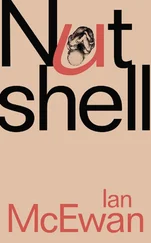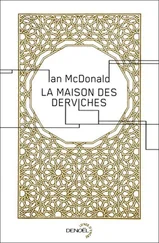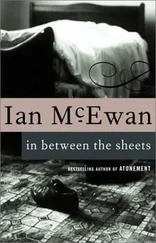But being silent or loyal got no one off the hook. The coverage was total. Until the attention of the press was distracted by a football scandal, he was its plaything. One front page rendered him in cartoon form as a leering goat, beckoning with limp hoof as it lounged against the caption: 'See Inside: Beard's Women'. Even as he opened the paper with sickening heart and scanned a gallery of faces, which included colleagues, old friends, the wives, Melissa, something in him stirred and an inner voice, steely, beyond humiliation, murmured that he had not done so badly in three or four decades, that all these women had the gleam of quality, of high self-possession. As for the impostors, the chancers, there were actually three, all not quite beautiful. But how could he not be interested in the fictitious nights they spent with him? He was flattered.
In all, however, it was a miserable time. It had started out innocently enough, with a mouse-click of assent to an invitation to be the titular head of a government scheme to promote physics in schools and universities, to entice more graduates, more teachers, into the profession, to glory in past achievements and make intellectual heroes out of physicists. When the invitation came, he was busier than he had ever been in his life and he could so easily have refused. He had an artificial-photosynthesis project at Imperial College, with fifteen people working for him. He was still at the Centre, though mostly for the purpose of drawing his fee. And it was important, he felt, to keep his new work out of Jock Braby's reach. Beard had started his company, he was acquiring patents on catalysts and other processes, and he had found Toby Hammer, a wiry ex-drunk, a fixer and go-between, who knew his way round campus bureaucracies and state legislatures and the homes of venture capitalists. Beard and Hammer had been looking for a solar-rich site, first in the Libyan Sahara, then in Egypt, then Arizona and Nevada, and finally, as a decent compromise, in New Mexico. Now Beard was alive with purpose and was shedding many of his old sinecures. But this request came through the Institute of Physics and was difficult to refuse.
And so he sat for the first time with his committee in a seminar room in Imperial College. His colleagues were three professors of physics from Newcastle, Manchester and Cambridge, two secondary-school teachers from Edinburgh and London, two headmasters from Belfast and Cardiff, and a professor of science studies from Oxford. Beard asked the members to introduce themselves in turn and explain a little about their background and their work. This was a mistake. The physics professors went on too long. They were impressed by their own work and they were instinctively competitive. If the first was going to speak in great detail, then so were the second and the third.
It was not old habits alone that made Beard impatient to hear from the professor of science studies, for the subject itself was a novelty to him. She was the last to speak, and introduced herself as Nancy Temple. Her face was round, not exactly pretty, but pleasant and open, and its pink blush had a childlike, well-defined edge curving down from cheekbone to jawline. He thought it could do no harm to ask her out to dinner. She began by noting that she was the only woman in the room, and that the committee reflected one of the very problems it might want to address. Round the table, everyone, including Beard, who had invited all of those present except Nancy Temple, murmured his emphatic assent. Her voice had the hypnotic sing-song inflections of Ulster. She confirmed that she had grown up in a middle-class suburb of Belfast and attended Queen's University, where she studied social anthropology.
She said she could best explain her field by outlining a recent project, a four-month in-depth study of a genetics lab in Glasgow as it set out to isolate and describe a lion's gene, Trim-5, and its function. Her purpose was to demonstrate that this gene, or any gene, was, in the strongest sense, socially constructed. Without the various 'entexting' tools the scientists used – the single-photon luminometer, the flow cytometer, immunofluorescence, and so on – the gene could not be said to exist. These tools were expensive to own, expensive to learn to use, and were therefore replete with social meaning. The gene was not an objective entity, merely waiting to be revealed by scientists. It was entirely manufactured by their hypotheses, their creativity, and by their instrumentation, without which it could not be detected. And when it was finally expressed in terms of its so-called base pairs and its probable role, that description, that text, only had meaning, and only derived its reality, from within the limited network of geneticists who might read about it. Outside those networks, Trim-5 did not exist.
During this presentation, Beard and the physicists from universities and schools listened in some embarrassment. Politely, they avoided exchanging glances. They tended to take the conventional view, that the world existed independently, in all its mystery, awaiting description and explanation, though that did not prevent the observer leaving thumbprints all over the field of observation. Beard had heard rumours that strange ideas were commonplace among the liberal-arts departments. It was said that humanities students were routinely taught that science was just one more belief system, no more or less truthful than religion or astrology. He had always thought that this must be a slur against his colleagues on the arts side. The results surely spoke for themselves. Who was going to submit to a vaccine designed by a priest?
When Nancy Temple came to the end of her speech, Newcastle and Cambridge spoke up simultaneously, more in wonder than in anger. 'Where does that leave Huntington's, for example?' one said as the other was asking, 'Do you honestly believe that what you don't know about doesn't exist?'
Beard, chivalrous to the hilt, thought it his duty to protect her and was about to step in, but Professor Temple was replying in a tolerant manner.
'Huntington's is also culturally inscribed. It was once a narrative about divine punishment or demonic possession. Now it's the story of a faulty gene, and one day it will likely transmute into something else. As for the genes we know nothing about, well, obviously, I have nothing to say. Of the genes that have been described, clearly they can only come to us mediated by culture.'
It was her calmness that provoked the uproar, and this time the chairman intervened firmly – he was an old hand at this game – to remind the committee that time was limited and guide its attention towards item two on the agenda. The brief was to convene twelve times in thirteen months and then make recommendations. Now was the time to pencil in some provisional dates.
Later that afternoon, the committee arranged itself behind a long table in a room at the Royal Society for the press launch of what had been named by a government public-relations department as Physics UK. It had its own logo displayed on an easel, a flighty monogram of the letters E, M and C squared impaled upon an 'equals' sign, to resemble an asymmetric garden shrub. Beard introduced his colleagues, made some opening remarks and invited questions from the journalists, who, slumped over their recorders and notebooks, seemed depressed by the seriousness of their assignment, its scandalous lack of controversy. Who was going to take a brave stand against more physicists? The questions were dull, the answers diligent. The whole project was lamentably worthy. Why do the government the favour of writing it up at length?
Then a woman from a mid-market tabloid asked a question, also routine, something of an old chestnut, and Beard replied, as he thought, blandly. It was true, women were under-represented in physics and always had been. The problem had often been discussed, and (he was mindful of Professor Temple as he said it) certainly his committee would be looking at it again to see if there were new ways of encouraging more girls into the subject. He believed there were no longer any institutional barriers or prejudices. There were other branches of science where women were well represented, and some where they predominated. And then, because he was boring himself, he added that it might have to be accepted one day that a ceiling had been reached. Although there were many gifted women physicists, it was at least conceivable that they would always remain in a minority, albeit a substantial one, in this particular field. There might always be more men than women who wanted to work in physics. There was a consensus in cognitive psychology, based on a wide range of experimental work, that in statistical terms the brains of men and women were significantly different. This was emphatically not a question of gender superiority, nor was it a matter of social conditioning, though of course it played a reinforcing role. These were widely observed innate differences in cognitive ability. In studies and metastudies, women were shown to have, on average, greater language skills, better visual memory, clearer emotional judgement and superior mathematical calculation. Men scored higher in mathematical problem-solving and abstract reasoning, and in visual-spatial awareness. Men and women had different priorities in life, different attitudes to risk, to status, to hierarchies. Above all, and this was the really striking difference, amounting to roughly one standard deviation, and the one to have been studied repeatedly: from early in life, girls tended to be more interested in people, boys more in things and abstract rules. And this difference showed in the fields of science they tended to choose: more women in the life sciences and the social sciences, more men in engineering and physics.
Читать дальше












